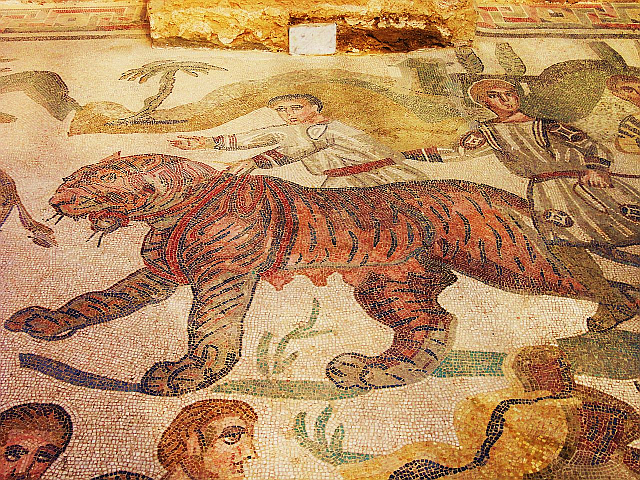At the Yale University Art Gallery hang wall paintings from one of the world’s oldest churches. Buried by the middle of the third century, this house-church from eastern Syria had images of Jesus, Peter and David. The gallery showcases a well-preserved procession of veiled women that once surrounded its baptistery, a room for Christian initiation.Given our recent concern with the account of the Incarnation in Paradiso 7, this piece from the New York Times may be of interest. It argues that a painting
owned by Yale could in fact be the oldest depiction of the Virgin Mary:
The church’s painted baptistery remains a unique discovery. Outside of funerary contexts, such as the catacombs in Rome, there are precious few Christian paintings from before Emperor Constantine’s conversion to Christianity in the fourth century. These also offer a glimpse into the beliefs and rituals of Syrian Christians, a community currently in peril.
While the Samaritan Woman at the Well was a respected biblical figure for early Christians, there was actually a more prominent “woman at the well” in Syria: the Virgin Mary during the Annunciation, when an angelic visitor informed her of her miraculous pregnancy.
The remarkable image might be pregnant with an unsuspected surprise:
The woman at Dura-Europos has yet more secrets to reveal. Archival photographs and drawings made by the archaeologists on site show that the supposed absence behind the female figure is not totally silent — it speaks a couple of lines. That is to say, a field sketch of the wall done “to show additional details” depicts two painted lines touching the woman’s back, along with a kind of starburst on the front of her torso, features described as “unexplained” in the archaeological report. But with the new interpretation of the figure, in connection with the Eastern iconography that came later, the lines invite a rather evident meaning. They appear to represent a motion toward the woman’s body and a spark of activity within it, as if something invisible were approaching and entering her — an incarnation.



No comments:
Post a Comment